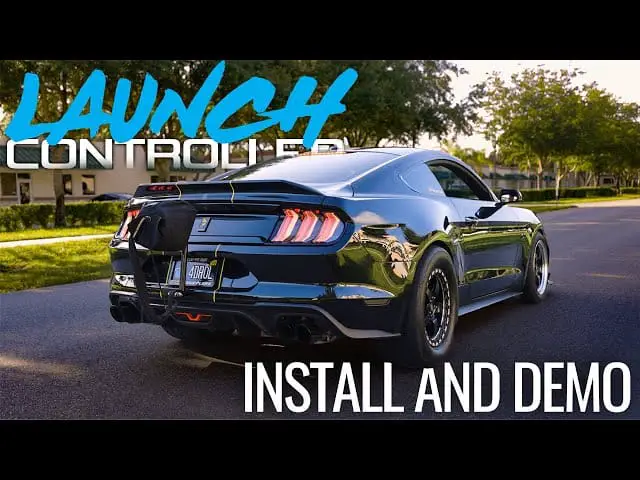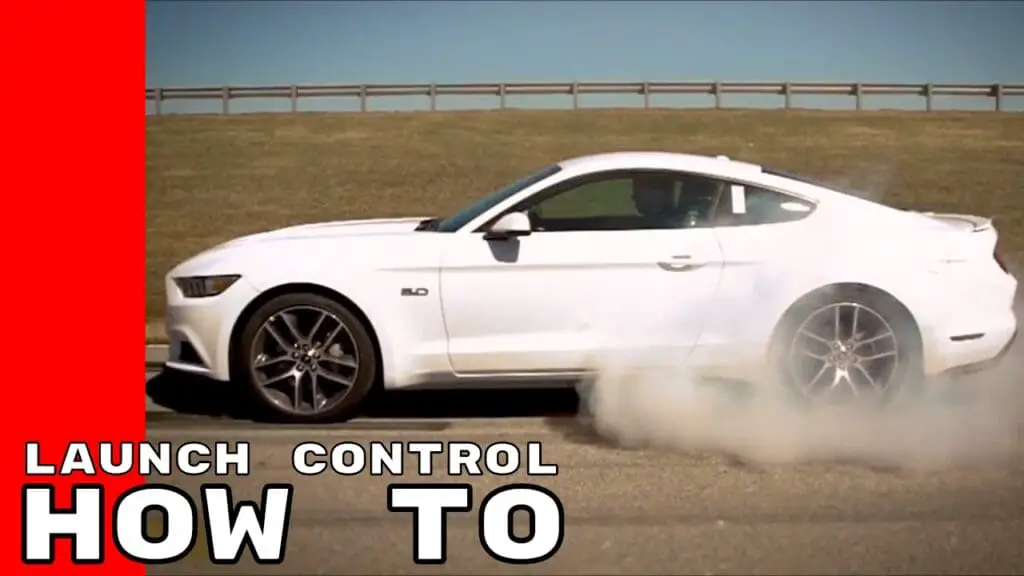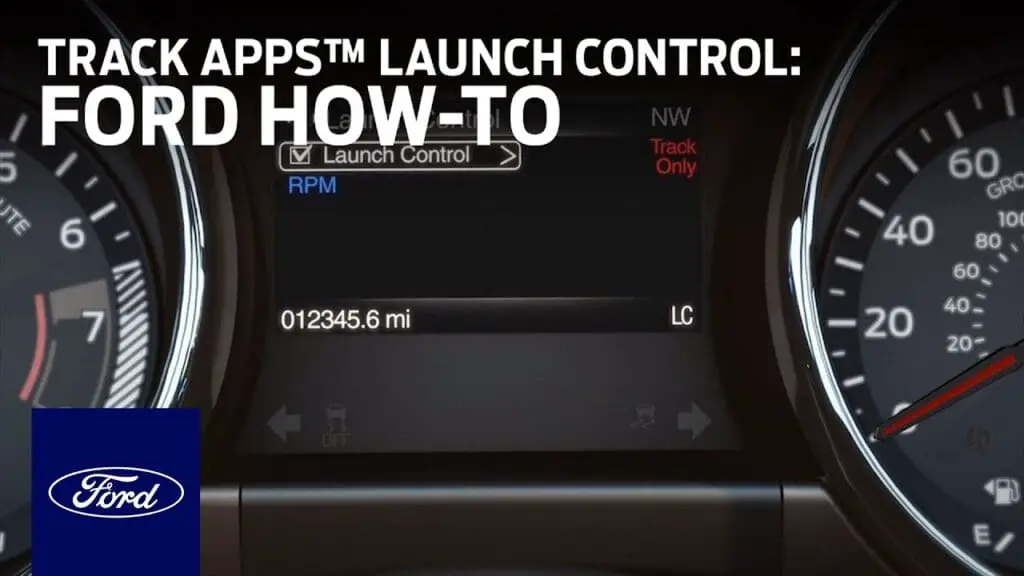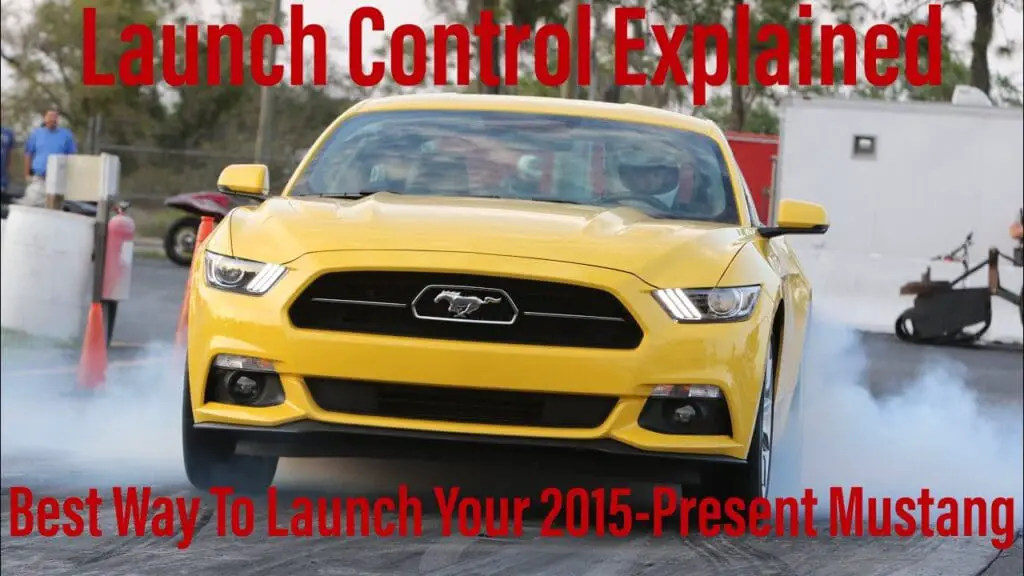If you’re the proud owner of a Ford Performance car and want to take your driving experience to the next level, then learning how to improve launch control is your ticket to ultimate power and speed. Launch control is a feature that allows you to maximize your car’s acceleration from a standstill, giving you that adrenaline-pumping punch as you take off. In this article, we’ll explore some simple yet effective techniques that will help you master the art of launch control in your Ford Performance car, leaving everyone else in your rearview mirror. So buckle up, and get ready to unleash the full potential of your vehicle.
Understanding Launch Control
What is launch control?
Launch control is a feature found in Ford performance cars that allows you to achieve optimal acceleration from a standing start. It is designed to help drivers maximize their vehicle’s performance by maintaining consistent wheel slip and engine RPM during launch.
How does it work?
Launch control works by utilizing advanced engine and traction control systems to regulate the vehicle’s power delivery and optimize acceleration. When activated, the system takes over control of the throttle, clutch, and other parameters to ensure a smooth and controlled launch. By carefully managing these variables, launch control helps to minimize wheel spin and maximize traction, resulting in faster and more efficient accelerations.
Benefits of launch control
The main benefit of launch control is improved acceleration performance. By providing precise control of throttle and clutch engagement, launch control allows you to achieve quicker, more consistent launches, ultimately translating into faster 0-60 mph times and better overall performance. In addition, launch control can help reduce wear and tear on the drivetrain components by minimizing wheel spin and unnecessary stress during acceleration.
Choosing the Right Ford Performance Car
Consider the model
When choosing a Ford performance car with launch control, it’s important to consider the specific model that best suits your needs and preferences. Whether you’re interested in the nimble Ford Fiesta ST or the powerful Ford Mustang GT, each model offers its own unique combination of performance characteristics and features, including launch control.
Check for available launch control features
Not all Ford performance cars come equipped with launch control, so it’s crucial to check the specifications and features of the specific model you are interested in. Launch control may be offered as a standard feature or as an optional add-on, depending on the model and trim level. Consulting the official Ford website, dealership brochures, or speaking with a knowledgeable salesperson can help you determine which models offer launch control.
Research performance capabilities
In addition to launch control, it’s essential to research and consider the overall performance capabilities of the Ford performance car you’re interested in. Look into factors such as horsepower, torque, transmission options, and handling characteristics to ensure that the vehicle aligns with your driving preferences and performance goals. By understanding the performance capabilities of the car, you can maximize the benefits of launch control and fully enjoy the driving experience.

Preparing Your Car for Launch Control
Ensure proper maintenance
Before engaging launch control, it’s crucial to ensure that your Ford performance car is in optimal condition with regular maintenance and servicing. This includes routine oil changes, checking and replacing air filters, inspecting the cooling system, and ensuring all fluid levels are correct. Proper maintenance helps to ensure that your vehicle’s engine and drivetrain are functioning at their best, allowing for optimal launch control performance.
Check tire pressure and condition
One of the key factors that can affect launch control performance is the condition and pressure of your vehicle’s tires. Before attempting a launch, take the time to inspect your tires for any visible damage or signs of wear. Additionally, check the tire pressure and ensure that it is within the manufacturer’s recommended range. Proper tire pressure helps to optimize traction and minimize wheel spin, allowing launch control to work more effectively.
Warm up the engine and tires
To get the most out of launch control, it’s important to properly warm up both the engine and tires. Letting the engine idle for a few minutes before launching allows the oil to circulate and reach optimal operating temperature. This helps to improve the performance and responsiveness of the engine during the launch. Additionally, performing a brief burnout or applying heat to the tires can help improve traction by warming up the rubber compound, ensuring maximum grip when launching.
Activating Launch Control
Locate the launch control button
To activate launch control in your Ford performance car, you’ll first need to locate the launch control button. The location of the button may vary depending on the specific model and trim level, so refer to the owner’s manual or consult a dealership professional if you’re unsure. Once you’ve located the button, ensure that the vehicle is in park or neutral, with the clutch depressed (if applicable), before proceeding.
Understand the activation procedure
Before engaging launch control, it’s important to understand the specific activation procedure for your Ford performance car. This may involve holding down the launch control button for a certain duration or navigating through the vehicle’s infotainment system to access the launch control feature. Familiarize yourself with the appropriate steps to activate launch control to ensure a seamless experience when you’re ready to launch.
Select the appropriate launch RPM
After activating launch control, you’ll typically have the option to select the desired launch RPM. This refers to the engine speed at which you want to launch, usually displayed on the vehicle’s instrument cluster or infotainment screen. Choosing the appropriate launch RPM depends on various factors, such as tire grip, road conditions, and weather. It’s essential to select a launch RPM that allows for optimal traction and acceleration without excessive wheel spin.

Mastering Launch Control Techniques
Practice throttle control
Throttle control is a critical skill to master when using launch control. It involves modulating the throttle pedal to maintain consistent power delivery and minimize wheel spin during the launch. Start by gradually applying throttle pressure while monitoring the RPM and wheel speed. Aim to find the sweet spot where the engine RPM and wheel slip are optimized for maximum acceleration. Through practice and experience, you’ll learn to fine-tune your throttle inputs for the best launch control performance.
Learn to modulate the clutch
For vehicles equipped with a manual transmission, proper clutch modulation is essential for a successful launch using launch control. The goal is to engage the clutch smoothly and progressively while effectively transferring power to the wheels without excessive slip or engine bogging. Practice finding the right balance between clutch engagement and throttle input to achieve a seamless launch. Remember, each vehicle and clutch setup may have slightly different characteristics, so be patient and adapt to your specific car’s requirements.
Perfecting your launch RPM
Finding the optimal launch RPM takes practice and experimentation. Start by selecting a conservative launch RPM and gradually increase it to find the sweet spot that provides the best launch performance. Pay attention to factors such as wheel spin, straight-line acceleration, and engine response. By consistently refining and perfecting your launch RPM, you’ll be able to achieve quicker and more efficient launches with the help of launch control.
Monitoring Launch Control Parameters
Use performance monitoring tools
Monitoring the performance parameters of your Ford performance car can provide valuable insights into the effectiveness of launch control. Utilize performance monitoring tools such as a performance data recorder or smartphone apps that can track acceleration, speed, RPM, and other relevant metrics. By analyzing this data, you can gain a better understanding of how launch control is affecting your vehicle’s performance and make informed adjustments to optimize your launches.
Monitor engine parameters
During launches, it’s essential to monitor various engine parameters to ensure that everything is operating within safe limits. Keep an eye on metrics such as engine temperature, oil pressure, and engine load to prevent any potential issues or damage. Launch control can put additional stress on the engine, so it’s crucial to be vigilant and aware of any abnormal readings or warning signs that may indicate a problem.
Analyze traction and wheel slip
Launch control relies on maintaining the right balance of traction and wheel slip. Monitoring wheel slip can give you valuable feedback on the performance of launch control. Excessive wheel spin can indicate that the launch RPM is too high or that traction is compromised, while too little wheel spin may indicate a lack of power or poor engagement. Analyzing the level of wheel slip can help you make adjustments to optimize launch control performance for better acceleration and traction.

Overcoming Common Launch Control Issues
Dealing with excessive wheel spin
One common issue when using launch control is excessive wheel spin, which can decrease traction and negatively impact acceleration. If you’re experiencing excessive wheel spin, consider reducing the launch RPM to allow for better grip from the tires. Additionally, ensuring that your tires are in good condition and properly inflated can help minimize wheel spin and improve traction during launches. With practice and experimentation, you’ll be able to find the right balance to achieve optimal launches without excessive wheel spin.
Managing wheel hop
Another challenge that can arise when using launch control is wheel hop, which occurs when the tires rapidly alternate between gripping and losing traction during hard launches. Wheel hop can cause a loss of control and potentially damage the drivetrain components. To manage wheel hop, focus on smooth and controlled clutch engagement, which can help prevent rapid changes in traction. Additionally, optimizing your launch RPM and adjusting tire pressure may also mitigate wheel hop issues.
Troubleshooting launch control failures
While launch control is designed to be a reliable feature, there may be instances where it fails to engage or function as expected. In such cases, there can be various factors at play, such as incorrect activation procedure, software glitches, or mechanical issues. If you encounter launch control failures, refer to your vehicle’s owner’s manual for troubleshooting steps or seek assistance from a certified Ford technician. They can diagnose and resolve any underlying issues to ensure proper functioning of the launch control system.
Advanced Launch Control Techniques
Utilizing launch control in different driving conditions
Launch control is not limited to perfect road conditions or dry pavement. With the right adjustments and techniques, you can effectively use launch control in various driving conditions, including wet or slippery surfaces. However, it’s crucial to exercise caution and adjust your launch RPM and throttle inputs accordingly to maintain optimal traction and control. Experimenting with launch control in different driving conditions can help you gain confidence and maximize its effectiveness.
Optimizing launch control with aftermarket modifications
For enthusiasts looking to enhance their launch control performance, aftermarket modifications can provide significant improvements. Upgrading components such as tires, exhaust systems, intakes, or even performance software can enhance vehicle performance and maximize the benefits of launch control. However, it’s essential to research and consult with professionals to ensure that any modifications are compatible with your specific Ford performance car and do not compromise its reliability or safety.
Exploring launch control strategies for drag racing
Launch control is particularly valuable in the context of drag racing, where getting off the line quickly can make a significant difference in the outcome of a race. Drag racers often employ advanced launch control techniques, such as power brake launches or building boost using turbocharged or supercharged vehicles. These techniques require a deep understanding of the specific vehicle’s characteristics and may involve additional modifications or adjustments to maximize launch control performance in a drag racing environment.

Safety Considerations
Drive responsibly and within legal limits
When utilizing launch control or any performance feature, it’s crucial to prioritize safety and responsible driving. Always adhere to local traffic laws and regulations and avoid engaging launch control in inappropriate or unsafe locations. Launch control is designed to be used on closed courses or dedicated performance environments, where you can exercise full control and minimize risks to yourself and others. Remember, responsible driving is the key to enjoying the thrill of your Ford performance car safely.
Ensure adequate space for launch
Launching a high-performance vehicle requires a sufficient amount of space to ensure the safety of both the driver and other road users. It’s important to select a location that provides adequate visibility and ample distance for acceleration without posing a risk to nearby pedestrians, vehicles, or property. Avoid congested areas, residential neighborhoods, or areas with heavy traffic to minimize the potential for accidents or other unsafe situations.
Be cautious of potential drivetrain stress
Launch control places additional stress on the drivetrain components, including the engine, transmission, and differential. While Ford performance cars are built to withstand these demands, it’s important to be mindful of potential stress and take measures to mitigate any adverse effects. Regular maintenance, fluid changes, and inspections can help to ensure the longevity and reliability of the drivetrain components, preserving the performance and enjoyment of your Ford performance car.
Conclusion
Improving launch control in your Ford performance car can unlock exhilarating acceleration and maximum performance. By understanding the fundamentals of launch control, choosing the right vehicle, preparing your car adequately, and mastering essential techniques, you can enhance your launch control experience. Remember to monitor the key parameters, overcome common issues, and explore advanced techniques for optimized launch control performance. Through continuous practice and refinement, you’ll be able to enjoy the ultimate Ford performance experience and make the most of your high-performance vehicle.


